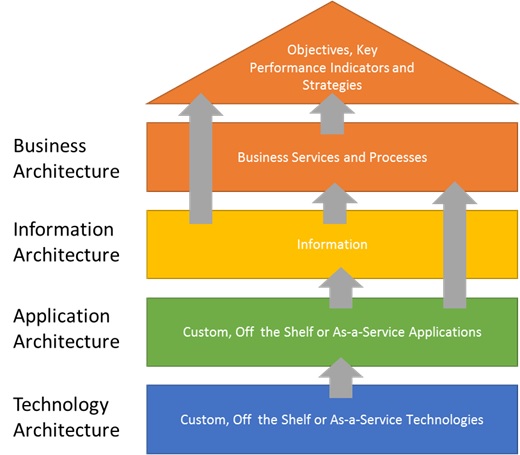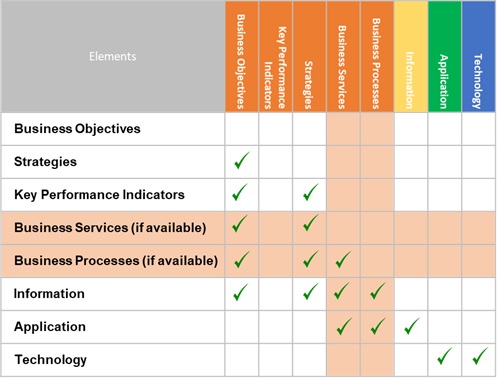Mapping refers the activity of identifying and documenting the relationships between elements within a layer of an enterprise architecture or across layers of an enterprise architecture.
Mappings can be used to ensure all necessary information about a current state of the planning organisation has been gathered prior to the commencement of the planning activity. For example, gaps may highlight the scope of the applications collected is not consistent with the scope of business processes collected.
Mapping helps practitioners and business representatives gain an understanding of:
- the current state of an organisation’s business strategic direction, services provided and supporting business processes, information, applications, and underpinning technology
- what is important to the business’s direction
- the information, applications, and technology assets or services that the business relies on for service delivery
- where changes to the current state including new business and technology capability may impact other parts of the business.
The analysis of mapping may result in actions that can be carried forward into the planning activities with the business. It should be noted some mapping relationships are required for whole-of-government reporting purposes.
Audience
A practitioner in the context of this guideline can include one or more of the following roles:
- Enterprise architects
- Digital and ICT strategic planners
- Agency and service strategic planners
- Business analysts.




